I found a couple of articles dealing with artists and their models; models are lesser known than illustrators, though they’re quite recognizable. An earlier article about one pulp model can be found here.
A note about the illustrations in the article below. Each illustration is posed by one of the models whose photos are given. Match them and post your guesses in the comments.
It is very interesting and significant to find that the studios of many modern artists are in office buildings. And that these, artists can talk as intelligently about contracts and compensations as they can about dynamic symmetry and the distance from nose to eye.
Some artists even tune in on Dr. S. Parkes Cadman every Sunday morning; that is, if they are not out motoring or horseback riding or taking a stroll with the kiddies.
And the way things have spruced up in artistic circles today, the young man who wants to date up a modern model had better be nice to her mother.
For instance; MacClelland Barclay, who illustrates the distinguished “Fisher Body” advertisements by ingeniously showing no autos but only beautiful, aristocratic girls, is the favorite artist of every fair lady who poses for him.
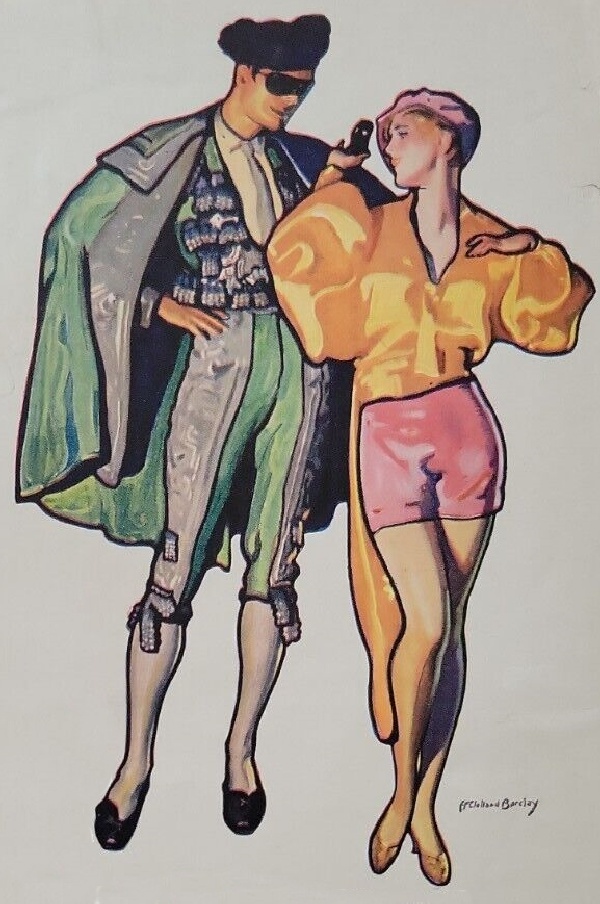
His types are mostly blonds and delicate red heads recruited from fastidious American families. And while they measure up gracefully to his requirements of a model, he answers aptly to their idea of what a charming and worldly man should be.
“Mr. Barclay is just in a class by himself,” says the very optically and aesthetically satisfying Blanche Rogers, one of the busiest models in Manhattan. “He’s athletic, and I love that in a man. He can enjoy a football game as much as an art exhibit. He’s breezy and direct and sincere. And he is a marvelous artist. I prefer his type to the bored, hand-kissing kind of man who bluffs his way with the women.
“WHERE do people get their funny ideas about artists and models?” queries the bewitching Miss Rogers. “Some of the college and business men I know are forever angling to extract some lurid confession from me about studio goings-on,” she says.
“They just seem unable to get it through their heads that most artists are wrapped up in their work and in making a success of themselves and that as a rule they talk little with the model but regard her quite impersonally.”
Miss Rogers is 5 feet 5 1-2 inches tall, and is constantly trying to tip the scales at not more than 115 pounds. She does not think it degrading for a girl to pose nude, but refuses to do it herself. The family would disapprove!
Also, she shuns offers to be photographed in brassieres and undies. “What a dreadful feeling it would be.” she says, “to have my escort to the theater casually turn the pages of the program and to suddenly find him staring open-mouthed at a picture of me in some stage of undress!”
Most of Mr. Barclay’s models are girls of conservative taste, who instinctively avoid too much self-display.
Miss Audrey Berry, the belle of Lexington, Kentucky, and for many years the Coca-Cola girl, finds modeling for Mr. Barclay an ideal occupation for a refined young lady.
“THE magazine artist today.” she offers, “is a straightforward man. The studio atmosphere is unpolluted by bohemian romance. Mr. Barclay is a very high type of individual and his pictures are just as distinguished as he is. While I am aiming for stardom in musical comedy, there is nothing in the movies or on the stage that can compare, as far as surroundings go, with the gentle charm of an artist’s atelier.
“How can a girl get a start as a model? Well, if she isn’t in the show business or some related field, I think the smartest thing to do is to acquaint herself with the work of the best artists in town. Then she should dig up their addresses and park on their doorsteps until she obtains an interview.
“Nine times out of ten an artist will not refuse to talk to a model who is job-hunting. Nor will he take advantage of her because she is in the position of having to ask for work. 1 think there are more stories told nowadays about the poor, harassed stenographer than about the artist’s model.”
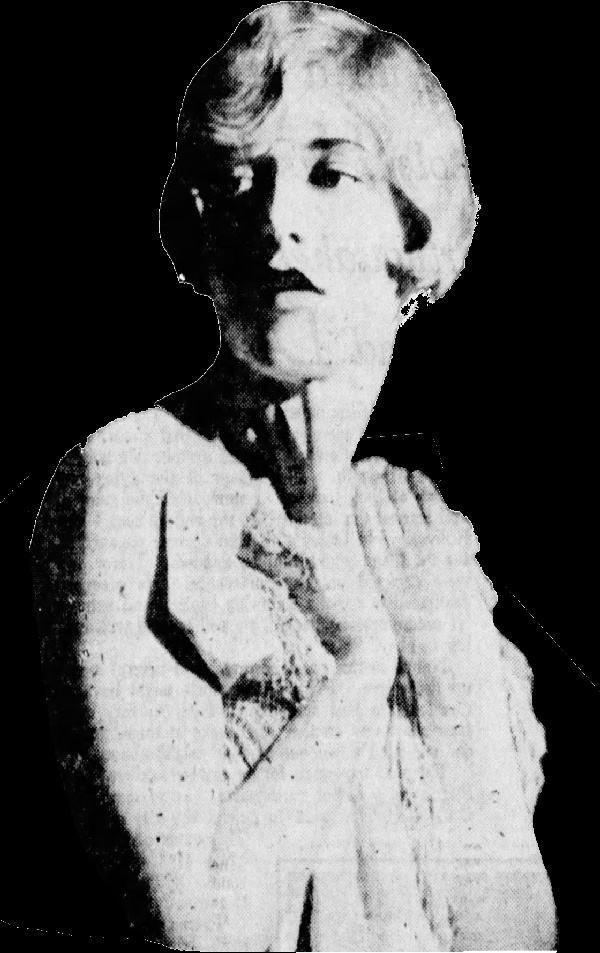
Miss Doris Booth, model for Artist Barclay, Harry Morse Myers, and Arthur William Brown, says that artists have it all over the average business man for appreciation of women.
And particularly beautiful women.
Doris is petite, blond and a Bostonian. She has a certain something Peggy-Hopkins-Joyceish in her dainty contours, but her views on marriage are idealistic and monogamistic.
“If I ever marry and have children, I shall heartily approve of any desire on the part of my son to be an artist, or the wish of a daughter to be a model. For the modern artist today exerts a wholesome influence on the girl who poses for him. He is usually cultured and well read. He is a student of human nature. He intensifies her understanding ol the beautiful.
“Never have I received an indecent proposal in a studio,” flashed Miss Booth, “but I must say that the average business man might revise his ideas a little about the morals of models!”
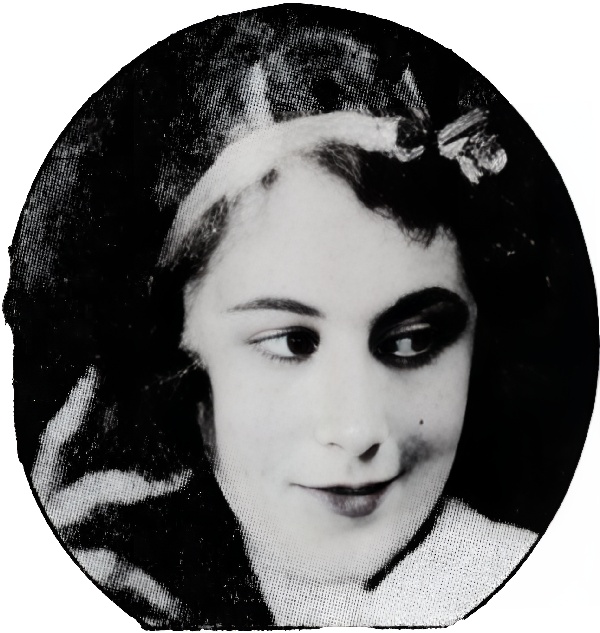
Miss Alwyne Peckrell came from Cambridge. Mass., to the big city only a little more than a year ago. but she has posed for Harrison Fisher, Neysa McMein, Henry Raleigh, Haskell Coffin, Clarence Underwood, Charles Dana Gibson and other well-known artists.
Of a possible difference between a man and a woman artist Miss Peckrell says: “I suspect men artists see in a beautiful girl or woman the qualities they imagine us to possess, whereas the woman artist knows women as they really are. Consequently I should say a painting of a girl by a man would be idealistic, and a painting of the same subject by a woman, realistic.
The woman artist rather unconsciously reflects her own personality and her own lovely idea of what a woman should be like. Take Neysa McMein, for example. Her magazine cover girls have the charm, intelligence and subtle beauty Miss McMein herself possesses. But since a man paints a girl largely of his imagination her exact prototype is rarely found.

“I think it is the tendency of each sex to idealize the other. And particularly in painting. A woman artist would, no doubt, idealize a man greatly when painting him; I have found this to be the case since studying art myself.
“MANY people,” says Miss Peckrell, “believe artists have nothing else to do but attend wild parties and indulge in impropriety. Nothing could be further from the truth! I myself was scared stiff to go near a studio for I had imagined artists as a bunch of ogres who wanted to devour little girls.
“Then one day I had the good fortune to meet Harrison Fisher. He was charming, kind and very-encouraging. I started to pose, and soon my dreams were all coming true. … I was a girl on a magazine cover! What a thrill when the first picture I posed foi came out. How I trembled at the news-stand as I paid for my magazine. I remember running away quickly for fear the newsdealer might recognize me … but I learned later it was unnecessary … he was blind!”
“Some girls enjoy being looked at as though they were curios,” Miss Peckrell went on. “But a girl whose interests go a little deeper than the surface will weary of flattery. The artist’s model seldom makes a sensational impression because artists prefer a subtle type of beauty of which people will not too quickly tire. I will say, though, that since I have modeled for famous artists, the boys at home have mddenly found a lot to interest them in the ‘little freckle-face’ of bygone school days.”
Ms. Peckrell is highly qualified to pose as the girl who keeps that “schoolgirl complexion,” immortalized by Clarence Underwood, for she is a high school graduate and college girl herself.
This winsome miss does not pose nude. “Not because I object, she hastened to add. “But because I am busy right now with portrait and magazine work. The model who poses nude is not exposed to insults as some people suppose. Rather does she command greater respect from the artist. One has but to note the complete indifference with which the student body in an art school views its nude model. If the student reacts thus,” she asks, “then why question the attitude of the talented and experienced artist?”
SUZANNE TALBOT is the scintillating blond who coaxes you to walk a mile for a camel. She is tall, slim, and alluringly feminine. Modeling is something of an avocation with her, but she has decided that artists have a more sensitive attitude toward the fair sex, though she is a trifle skeptical about all men.
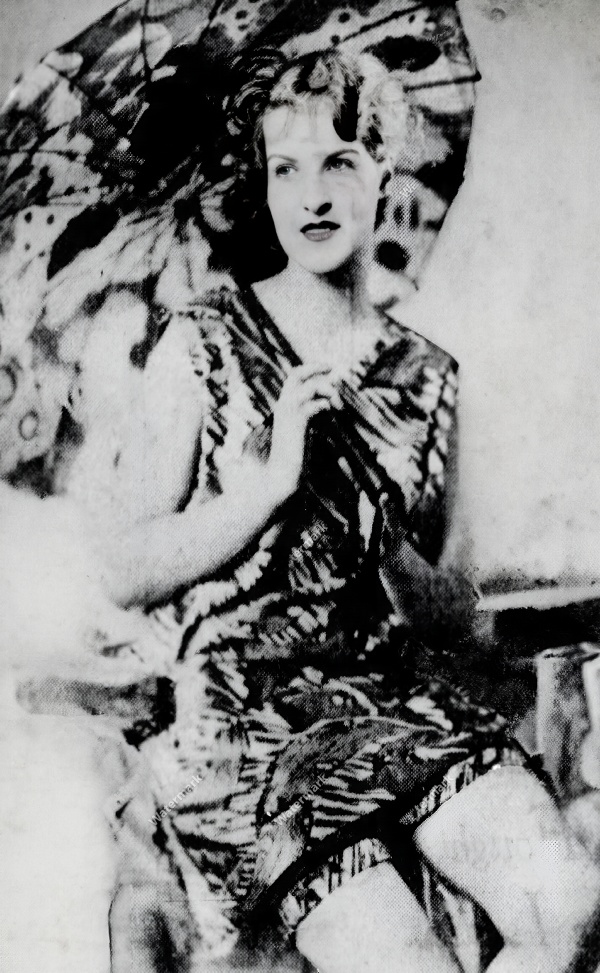
“Mr. Underwood likes my type, I guess, because I seem girlish and wholesome,” she naively supposes. “He is a very serious worker, and a man of simple tastes. I suppose it seems curious to hear of an artist counseling his model to save her money in order to travel and see something of the world’s beauty. But that is characteristic of Mr. Underwood. He is a devoted husband and father. His wife plays the piano and he plays the violin. And they both play bridge!”
Again in Miss Talbot’s case, posing nude was not personally objectionable, but out of the question because of her family. “It would half kill them!” she confessed.
Margaret Severn, the captivating dancer who distinguished herself several seasons ago in the “Greenwich Village Follies”, has often been called the “Benda girl.” Wladislaw T. Benda is the world-famous portrait artist, illustrator and creator of masks whose oval-faced, almond-eyed women have been haunting magazine readers and theatergoers for years.
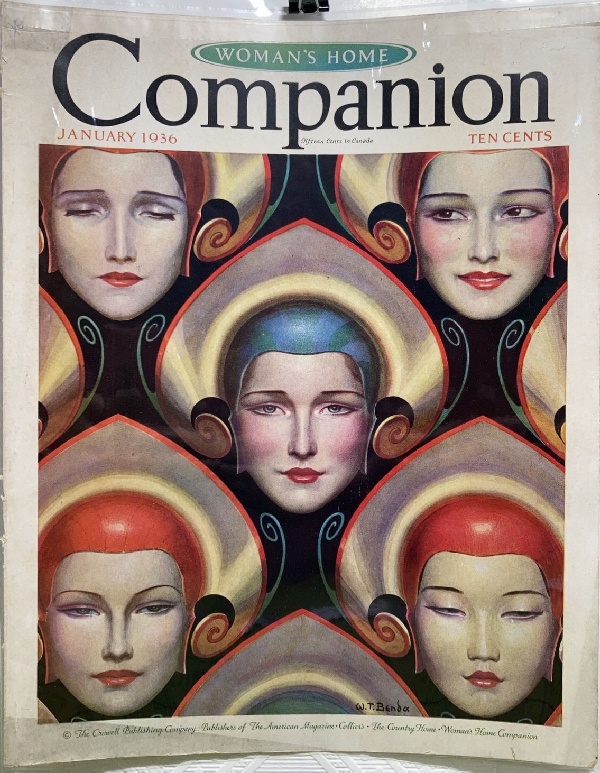
“IT’S not true at all,” says Miss Severn, “that I am the ‘Benda girl.’ No girl is. The type Mr. Benda depicts exists only in his imagination. And whether you are Oriental or American in your facial characteristics, if Mr. Benda is drawing you for his own pleasure you emerge on the canvas With a certain mysterious ’Benda’ look.
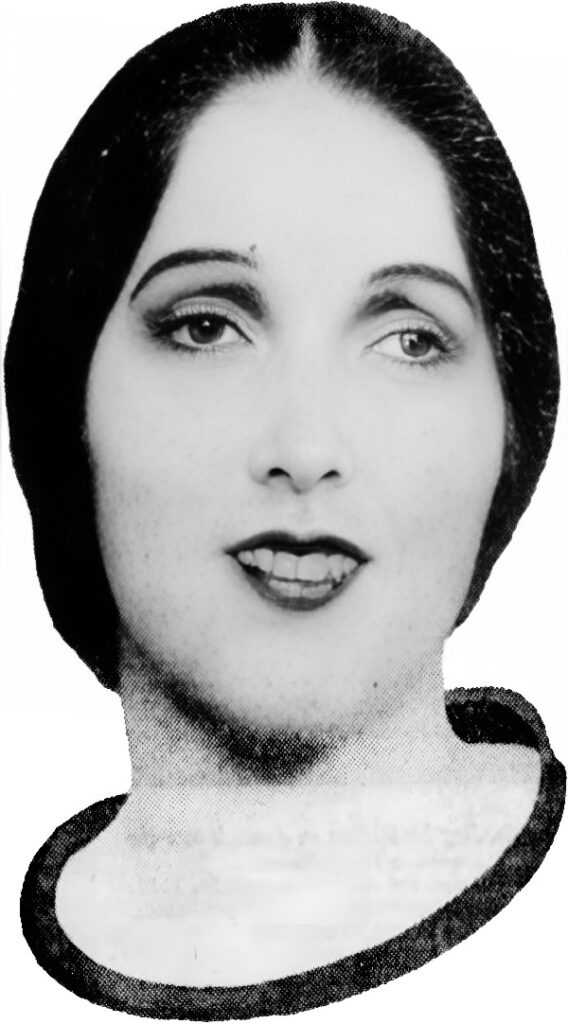
Even Artist Benda himself — a shy, diffident and extremely gentle man — admitted that he was largely influenced by his mental vision of a beautiful woman even when working from a model.
There have, however, been many occasions when girls who thought they resembled the “Benda girl” came to his studio and presented themselves as models. Many times he was forced to tell the enterprising young ladies as tactfully as he could that they were not quite suitable.
And then, once in a while, the miraculous would happen, a girl with ihe certain serene brow and smooth cheeks he so admires would walk into the studio, and be engaged to pose. Mrs. Benda has been the inspiration for many of her husband’s alluring pictures.
Miss Severn is very courageous on the subject of nudity. “If I could,” she said, “I would go without clothes all the time. It doesn’t make a speck of difference what I have or haven’t on when I pose for a painter or sculptor. And most artists regard you with professional candor and calm. If there has ever been a time when an artist seemed amorous in his attitude toward me, I am quite sure that it was a case of his being in love with the dream I represented.
“I would not be especially happy in the companionship of a man who was not sensitive and artistic,” says Miss Severn, “although very often, it is a better arrangement for one of the partners in a love affair to have a practical outlook that will balance the artistic, impulsive one.
“That is why models so often make good wives. They are in sympathy with the artist’s demands, yet they themselves are free of a certain amount of temperament. When I speak of temperament I am thinking of the reckless energy with which great men give themselves to their art.
“I am a dancer and I teel that when a woman is 35 years old she is only then at the height of her artistic understanding and development Models, however, if they do not eventually devote themselves to the stage or movies, have a constant worry about growing old. For most girls the best solution is — marriage.”